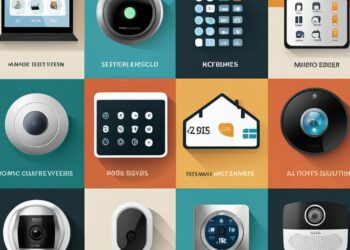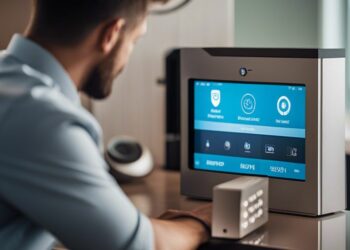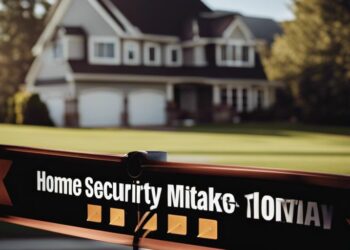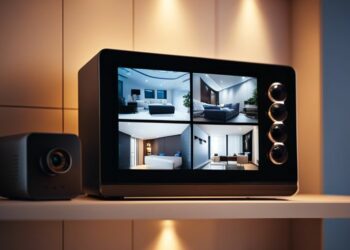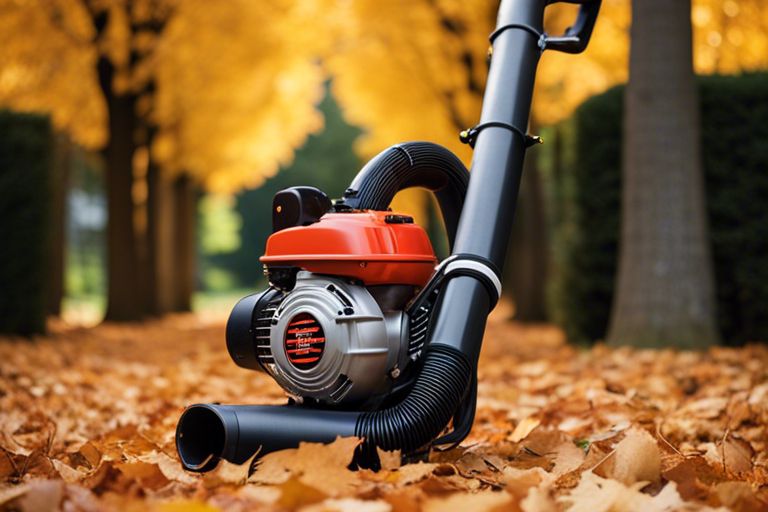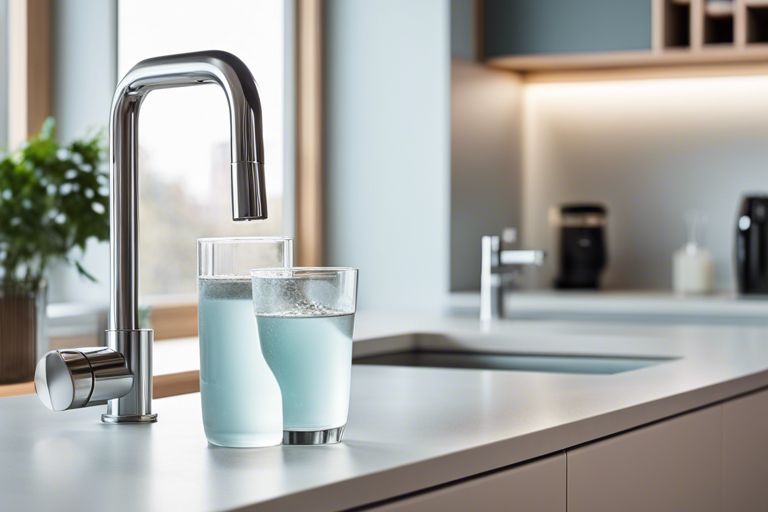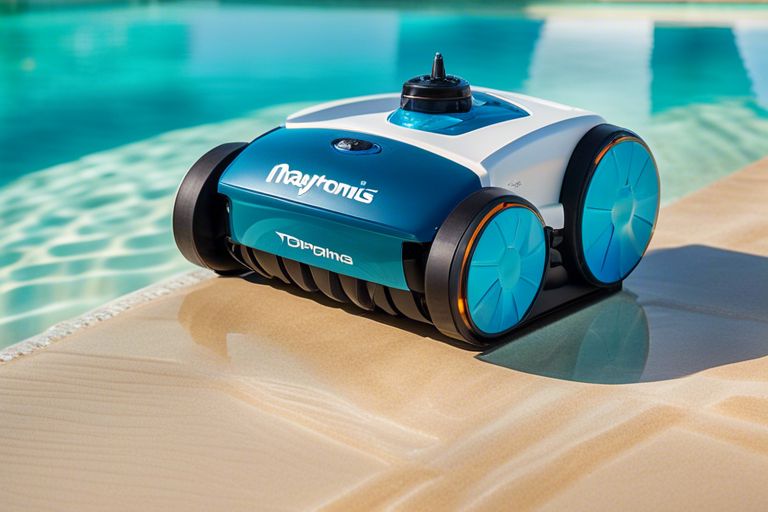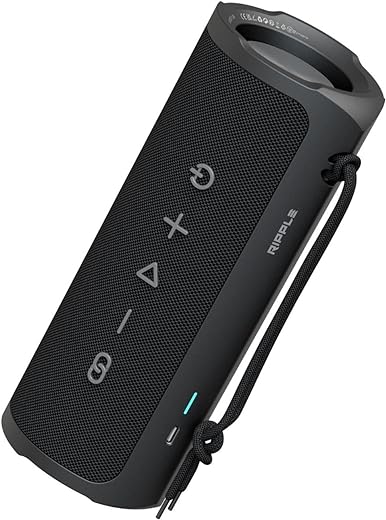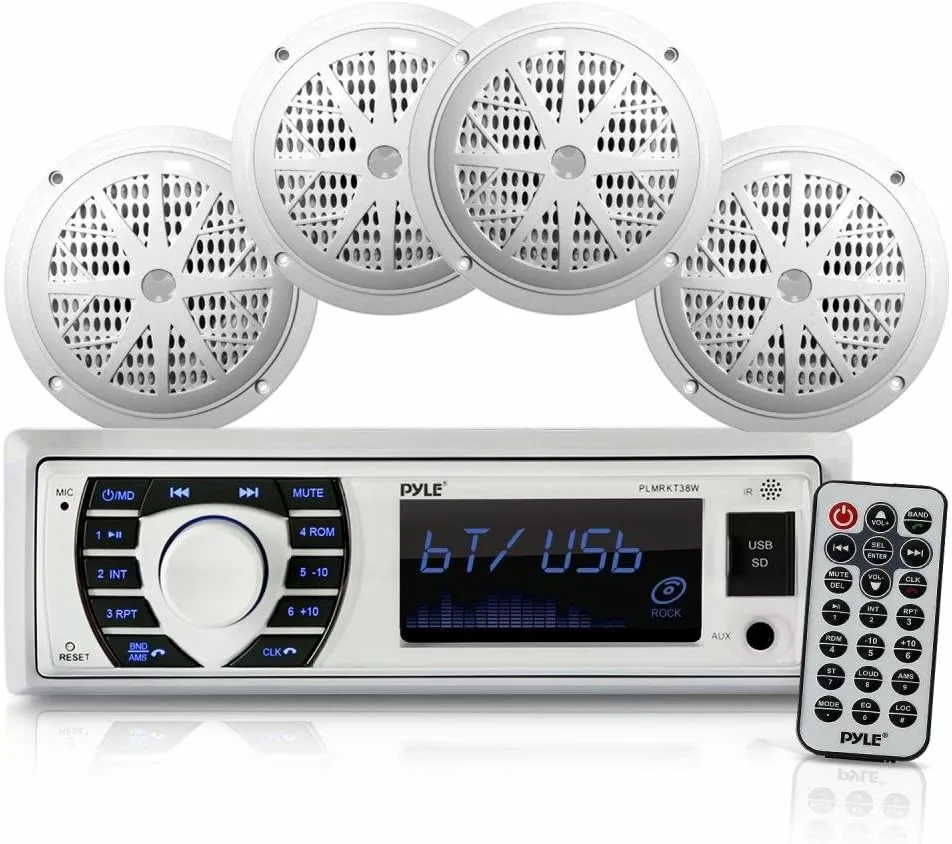There’s no better feeling than knowing your home is safe and secure, and with the advancements of smart security technology, this has become easier than ever. In this guide, we will cover the ins and outs of securing your home with the latest smart security devices, offering you peace of mind whether you’re at home or away. From smart cameras to motion sensors and alarm systems, we’ve got you covered with all the information you need to make your home a safer place.
Contents
- 1 Understanding the Basics of Smart Security Technology
- 2 Assessing Your Home’s Security Needs
- 3 Choosing the Right Smart Security Devices
- 4 How to Install Smart Security Devices
- 5 Setting Up Your Smart Security System
- 6 Effective Ways to Use Smart Security Cameras
- 7 The Importance of Smart Door Locks
- 8 Tips for Securing Your Home Network
- 9 How to Integrate Smart Security with Other Smart Home Devices
- 10 Factors to Consider When Choosing a Smart Security Provider
- 11 How to Monitor and Respond to Security Alerts
- 12 Advanced Smart Security Features to Consider
- 13 Common Mistakes to Avoid When Implementing Smart Security
- 14 Final Words
- 15 FAQ
Understanding the Basics of Smart Security Technology
What is Smart Security Technology?
If you are looking to enhance the security of your home, smart security technology is the way to go. Smart security technology refers to a range of devices and systems that are connected to the internet and can be controlled remotely. These devices include smart cameras, motion sensors, smart doorbells, and smart locks, among others. They provide homeowners with real-time alerts and the ability to monitor and control their security systems from anywhere, using their smartphones or other connected devices.
How Does it Work?
Smart security technology works by using a combination of sensors, cameras, and internet connectivity to monitor and protect your home. When a sensor is triggered, such as a motion sensor detecting movement, the system will send an alert to your smartphone or other connected devices. You can then view the live feed from your cameras to see what is happening and take appropriate action, such as contacting authorities or activating a siren.
The beauty of smart security technology is that it allows you to have peace of mind knowing that your home is being monitored 24/7, even when you are away. With the ability to remotely control and monitor your security system, you can respond quickly to any security threats and keep your home and loved ones safe.
Understanding the Benefits of Smart Security Technology
Assessing Your Home’s Security Needs
There’s nothing more important than ensuring the safety and security of your home and loved ones. Assessing your home’s security needs is the first step towards implementing effective measures to protect your property. By carefully evaluating your home and understanding its vulnerabilities, you can make informed decisions about the best security solutions to invest in.
Identifying Vulnerable Areas
Identifying the vulnerable areas in your home is crucial for enhancing its security. Common vulnerable areas include windows, doors, garages, and entry points that can be easy targets for potential intruders. Take a walk around your property and look for any potential weak spots that could be exploited. By identifying these areas, you can prioritize them when implementing security measures to fortify your home.
Evaluating Your Budget
Little . It’s important to establish a budget for your home security needs to ensure that you can afford the necessary upgrades and systems. Consider how much you are willing to invest in securing your home and explore the various security options available within your budget. While some high-tech security systems can be costly, there are also more affordable solutions that can still provide adequate protection for your home.
Choosing the Right Smart Security Devices
Some of the most important decisions you will need to make when safeguarding your home with smart security technology revolve around choosing the right devices. From door sensors to motion detectors, there are a wide variety of options available to help protect your home and loved ones.
Types of Smart Security Devices (Door Sensors, Motion Detectors, etc.)
- Door sensors
- Window sensors
- Motion detectors
- Security cameras
- Smart locks
To ensure comprehensive coverage of your home, you may choose to combine various types of smart security devices. Any reputable security system provider will offer a range of devices that can be tailored to suit your specific needs and budget.
Factors to Consider When Selecting Devices (Wireless vs. Wired, Battery Life, etc.)
- Wireless vs. wired installation
- Battery life and power source
- Integration with other smart home devices
- Remote access and monitoring capabilities
- Subscription costs and additional fees
Motion sensors are a popular choice for many homeowners as they can detect movement and trigger alarms or notifications. After considering the different factors mentioned above, you can select the devices that best fit your home security needs.
Understanding Smart Security Device Compatibility and Integration
When choosing smart security devices for your home, it is necessary to consider their compatibility with other devices and systems. Some devices may work seamlessly with popular smart home platforms like Amazon Alexa, Google Assistant, or Apple HomeKit, allowing you to control your security system using voice commands or a mobile app.
How to Install Smart Security Devices
DIY Installation Tips
For those who prefer the hands-on approach, installing smart security devices can be a rewarding experience. To ensure a smooth installation process, start by carefully reading the manufacturer’s instructions and familiarizing yourself with the device. Before getting started, make sure you have all the necessary tools on hand and a clear understanding of where the device will be placed in your home.
- Start by selecting an optimal location for the device that provides maximum coverage.
- Follow the step-by-step instructions provided by the manufacturer to connect the device to your home’s Wi-Fi network.
- Test the device to ensure it is functioning properly before relying on it for security purposes.
Knowing how to troubleshoot common issues, such as connectivity problems or positioning errors, can save you time and frustration during the installation process.
When to Hire a Professional
Even though many smart security devices are designed for easy DIY installation, there are certain scenarios where it may be best to hire a professional. If you are not comfortable working with technology or electrical components, or if the installation process seems too complex, it is wise to seek the help of a professional installer.
Installation professionals have the experience and expertise to ensure that your smart security devices are correctly installed and optimized for maximum effectiveness. Additionally, hiring a professional can provide peace of mind knowing that your home security system is in good hands.
Setting Up Your Smart Security System
Configuring Your Devices
Keep your smart security devices running smoothly by ensuring they are properly configured. This includes setting up your cameras, sensors, and alarms to work together seamlessly. Make sure to follow the manufacturer’s instructions carefully to avoid any issues.
Regularly update the firmware on your devices to ensure they have the latest security patches and features. Additionally, set up notifications on your smartphone or computer to receive alerts if any of the devices detect unusual activity.
Creating a Customized Security Plan
Clearly define your security needs and priorities before setting up your smart security system. Take into account factors such as the layout of your home, your daily routine, and any specific security concerns you may have. This will help you determine the best placement for cameras and sensors to maximize coverage.
Smart security systems can be customized to fit your unique needs, whether you want to focus on monitoring for intruders, keeping an eye on your pets, or checking in on elderly family members. By creating a customized security plan, you can tailor your system to provide the protection and peace of mind you desire.
Effective Ways to Use Smart Security Cameras
Placing Cameras Strategically
While setting up your smart security cameras, it is crucial to strategically place them in areas that provide maximum coverage of your property. Focus on entry points such as doors and windows, as well as any other vulnerable areas around your home. Additionally, consider placing cameras at varying heights to capture different perspectives and minimize blind spots. By strategically situating your cameras, you can ensure comprehensive surveillance of your home.
Using Camera Features (Night Vision, Motion Tracking, etc.)
While most smart security cameras come with standard features like night vision and motion detection, it is important to make the most of these capabilities. Night vision enables your cameras to capture clear footage even in low-light conditions, providing round-the-clock monitoring. Motion tracking allows the cameras to follow any movement in their field of view, ensuring that no suspicious activity goes unnoticed. By utilizing these advanced features, you can enhance the effectiveness of your smart security system.
An additional feature to consider when using smart security cameras is two-way audio. This functionality allows you to communicate in real-time with anyone within range of the camera, whether it’s a family member or a potential intruder. Two-way audio can serve as a deterrent to intruders or simply offer convenience in communicating with visitors when you are not at home. It adds an extra layer of security and control to your surveillance system.
To
The Importance of Smart Door Locks
How Smart Door Locks Work
For many homeowners, smart door locks offer a convenient and secure way to safeguard their homes. These innovative devices use technology such as Bluetooth, Wi-Fi, or Z-Wave to communicate with your smartphone or other smart devices. When you approach your door, the lock can automatically detect your presence and unlock the door for you. You can also lock and unlock your door remotely, allowing you to control access to your home from anywhere.
Benefits of Smart Door Locks (Keyless Entry, Remote Access, etc.)
Accessing your home without a physical key is one of the main benefits of smart door locks. With keyless entry, you no longer have to worry about losing your keys or getting locked out of your house. Instead, you can use a unique code, your smartphone, or even your fingerprint to unlock the door. Remote access is another valuable feature that smart door locks offer. Whether you want to let in a guest while you’re away or check if you locked the door, you can do so conveniently from your smartphone.
Plus, some smart door locks offer integration with other smart home devices, such as security cameras or smart lights. This means you can create a more robust home security system that works seamlessly together to keep your home safe and secure.
Tips for Securing Your Home Network
To safeguard your home with smart security technology, one of the necessary steps is securing your home network. Here are some tips to help you protect your network from cyber threats:
Protecting Your Wi-Fi Network
- Change the default username and password on your router to something strong and unique.
- Enable WPA3 encryption on your Wi-Fi network to prevent unauthorized access.
To ensure the security of your smart devices, it’s crucial to establish a separate guest network and disable network sharing features on your devices. Knowing who is connected to your network can help you detect any suspicious activity and take immediate action to protect your home.
Keeping Your Devices Up-to-Date
- Regularly update the firmware on your router and all connected smart devices to patch any vulnerabilities.
- Enable automatic updates on your devices to ensure they are always running the latest security patches.
Network security goes beyond just securing your Wi-Fi network. It also involves keeping all your devices up-to-date with the latest software updates and security patches. By staying current with updates, you can ensure that your smart home is protected from the latest threats and vulnerabilities.
Tips: Make it a habit to check for updates regularly and enable automatic updates whenever possible to keep your devices secure.
How to Integrate Smart Security with Other Smart Home Devices
Integrating with Voice Assistants (Alexa, Google Assistant, etc.)
Once again, having your smart security system integrated with voice assistants like Google Assistant or Alexa can significantly enhance the convenience and functionality of your overall smart home setup. You can simply use voice commands to arm or disarm your security system, check the status of sensors, or even view live camera feeds on compatible devices.
Integrating with Other Smart Devices (Thermostats, Lighting, etc.)
While smart security systems are designed to work seamlessly on their own, integrating them with other smart devices like thermostats, lighting systems, or door locks can take your home automation to the next level. This integration allows for a more holistic approach to home management, where different devices can work together to enhance security and create custom automation scenarios based on your preferences.
To fully maximize the potential of integrating smart security with other devices, it’s imperative to choose products that are compatible with major smart home platforms like Apple HomeKit, Zigbee, Z-Wave, or IFTTT. This ensures that your devices can communicate effectively and trigger automated actions based on pre-set conditions or triggers.
Factors to Consider When Choosing a Smart Security Provider
Reputation and Customer Reviews
To safeguard your home effectively, it is crucial to consider the reputation and customer reviews of the smart security provider you choose. Not all providers are the same, and some may have a better track record of providing reliable services and support to their customers. By researching online reviews and asking for recommendations from friends and family, you can gain valuable insights into the reputation of different security providers.
- Look for providers with a strong reputation for customer service and quick response times in case of emergencies.
- Consider the feedback of current and past customers to gauge the level of satisfaction with the provider’s products and services.
This information can help you make an informed decision when selecting a smart security provider for your home. This will ultimately contribute to the safety and security of your property and loved ones.
Pricing and Contract Options
Assuming that you have narrowed down your choices to a few reputable smart security providers, the next important factor to consider is their pricing and contract options. With respect to pricing, it is crucial to compare the costs of installation, equipment, and monthly monitoring fees across different providers. Keep in mind that some providers may offer discounts or specials for new customers, so be sure to inquire about any current promotions.
Contract options vary among security providers, with some offering month-to-month plans and others requiring long-term contracts. Contract terms can influence your flexibility in making changes to your security system or switching providers in the future. It is advisable to carefully review the terms and conditions of the contract before making a commitment to ensure that it aligns with your preferences and needs.
How to Monitor and Respond to Security Alerts
Setting Up Notifications
While setting up your smart security system, it is crucial to configure notifications to stay alert to any suspicious activity. By enabling real-time alerts on your smartphone or email, you can promptly respond to any security breach or unauthorized access. Make sure to customize the settings to receive notifications for specific events that matter most to you, such as motion detection, door/window sensors, or fire alarms.
Responding to False Alarms
False alarms can be a common occurrence with smart security systems and may result from a variety of reasons, such as pets triggering motion sensors or system glitches. While false alarms can be frustrating, it is necessary not to ignore them, as they can also indicate potential vulnerabilities in your system. To reduce the frequency of false alarms, consider adjusting sensor sensitivity levels, scheduling regular system maintenance, or upgrading to more advanced technology with improved accuracy.
Responding promptly and appropriately to security alerts is key to ensuring the effectiveness of your smart security system. By setting up notifications and understanding how to handle false alarms, you can better safeguard your home and loved ones against potential threats.
Advanced Smart Security Features to Consider
Many homeowners are turning to advanced smart security features to enhance the protection of their properties. These cutting-edge technologies offer a higher level of security and convenience for homeowners looking to safeguard their homes. Here are some advanced smart security features to consider:
-
Biometric Authentication (Fingerprint, Facial Recognition, etc.)
On the forefront of smart security technology is biometric authentication, which uses unique physical characteristics like fingerprints or facial features to grant access to a property. This advanced feature ensures that only authorized individuals can enter your home, providing an additional layer of security.
Biometric authentication is highly secure and eliminates the need for traditional keys or keypads, which can be lost or compromised. With this technology, you can have peace of mind knowing that your home is protected by the latest advancements in security.
-
Artificial Intelligence-Powered Security
Now, smart security systems are incorporating artificial intelligence (AI) to enhance their capabilities. AI-powered security systems can learn and adapt to your home’s activity patterns, alerting you of any unusual behavior or potential security threats.
Security cameras equipped with AI can distinguish between familiar faces and strangers, reducing false alarms and providing more accurate notifications. With AI-powered security, you can have advanced protection and peace of mind knowing that your home is being actively monitored and protected.
These advanced smart security features offer homeowners a comprehensive security solution that combines cutting-edge technology with convenience and peace of mind. By investing in these advanced features, you can enhance the protection of your home and keep your loved ones safe.
Common Mistakes to Avoid When Implementing Smart Security
Not Changing Default Passwords
Now, one common mistake that homeowners make when implementing smart security technology is not changing default passwords. Many smart devices come with generic passwords that are easy for hackers to guess. Failing to update these passwords puts your home at risk of being accessed by unauthorized users.
Not Regularly Updating Software
Any homeowner looking to safeguard their home with smart security technology should prioritize regularly updating software. Just like any other technology, smart security systems are vulnerable to security breaches if they are not regularly updated. Software updates often include important security patches that help protect your system against new threats.
To ensure the effectiveness of your smart security system, it is crucial to stay vigilant about installing software updates as soon as they become available. Set up automatic updates whenever possible to streamline this process and minimize the chances of overlooking a critical update.
Final Words
As a reminder, incorporating smart security technology into your home can provide peace of mind by allowing you to monitor and protect your property from wherever you are. By following the tips outlined in this guide, such as installing security cameras, smart locks, and a comprehensive security system, you can significantly enhance the safety and security of your home.
Investing in smart security technology is a proactive step towards safeguarding your home and deterring potential intruders. With advancements in technology, there are now more options than ever to create a customized security setup that meets your specific needs. By implementing these measures, you can create a secure environment for your family and valuables, ensuring that your home remains a safe haven for years to come.
FAQ
Q: What is smart security technology?
A: Smart security technology refers to the use of advanced devices and systems that provide enhanced security features for homes. These devices can include smart cameras, motion sensors, doorbell cameras, smart locks, and alarm systems that can be monitored and controlled remotely through an app on your smartphone or tablet.
Q: How can smart security technology safeguard my home?
A: Smart security technology can safeguard your home in various ways. With features like live video monitoring, motion detection, and instant alerts, you can keep an eye on your property and receive notifications of any suspicious activity in real-time. You can also remotely control access to your home by locking or unlocking doors, and set up custom alerts for specific events such as doors being opened or closed.
Q: Are smart security systems easy to install and use?
A: Yes, most smart security systems are designed for easy DIY installation and use. They often come with step-by-step instructions and can be set up without the need for professional installation. The devices are typically wireless and can connect to your home Wi-Fi network, allowing you to control them through an app on your smartphone. The user-friendly interfaces of these apps make it easy to monitor and manage your security system with just a few taps on your device.

